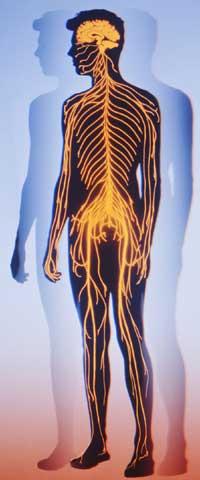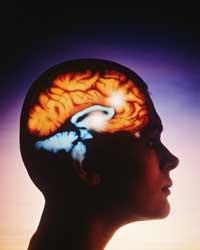Eating alone with thinking

However, the movement of the arms is governed by the brain. Therefore, the invalids would not have for themselves problems moving an orthopedic limb if they could interpret the order of their brain. They have gotten a way to interpret the thinking of a pair of macaques at Pittsburgh University, and macaques are able to move a bionic arm with just thinking.
First they taught the macaques what work they had to do. They showed them the movement and then taught them to move the prosthesis with a joystick. The neurons that were activated by seeing the movement and those that would activate to move the arm were the same.
Then, they introduced electrodes to detect the activity of neurons and, through a computer program, related the neurons that were activated to the macaque with the movements that produced the prosthesis, that is, they programmed what activities of neurons intended to move the arm.
The arms imitated quite well the movement of a normal arm, that is, it could stretch and flex the shoulder, spin, lengthen and flex the elbow, etc. The hand was a motorized clamp. Therefore, macaques could make the same movement of arms with prostheses.
To carry out the experiment, they immobilized the arms of the macaques (made them put their forearms in two tubes so that they did not use them). Thanks to this computer program, the chopos began to carry out the movement they would actually do with their arms through the orthopedic arm: when the researcher put a piece of fruit in front of the monkeys, they took it with the prosthesis and saved it. They even militated the orthopedic fingers! From time to time, the researchers moved the pieces of fruit and the monkeys ran the arm smoothly toward where there was a piece of fruit.

Well, in all cases not, occasionally they failed. But the more we repeat the movement, the easier it was to use it for macaques, and the more natural it was the movement of the arm, the more similar to the movement of a normal arm. Moreover, scientists discovered that while macaques were chewing a piece of fruit, they stretched their arm in search of another piece, or that the arbitrary movement of the eyes and head did not affect the movement of the prosthesis.
For humans, when?

Not only for eating, but also for scientists who have achieved it with chopsticks for humans. However, according to the researchers, they will have to greatly improve brain implants to be suitable for humans.
On the one hand, the electrodes should be more resistant and durable (those they have used with macaques are too fragile). And on the other hand, they will have to get the electrodes not to enter the brain. This is one of the biggest problems they have today: the brain surrounds in fabric the part of the electrode that is in contact with it, that is, it forms a kind of scar that produces to heal a wound.
When these problems are resolved, researchers believe that tools can be developed that will last for many years. But they are still quite far from that step. They have not even started working with humans, they intend to start in a couple of years.
Published in 7K.
Buletina
Bidali zure helbide elektronikoa eta jaso asteroko buletina zure sarrera-ontzian










